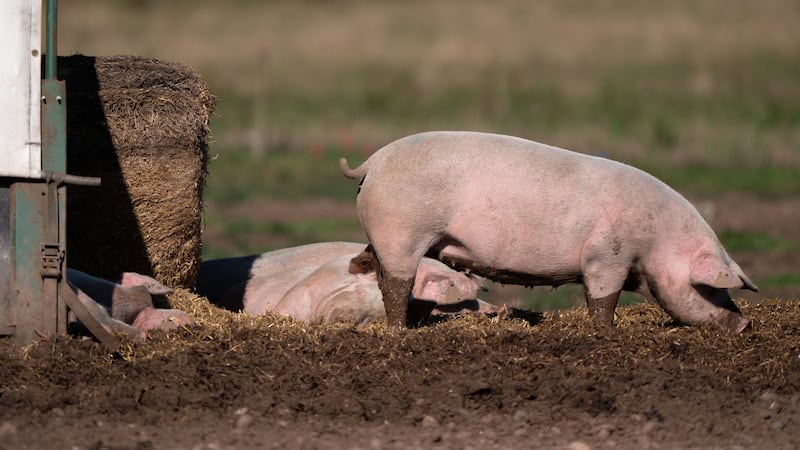The first human case of the flu strain H1N2 – which has been circulating in pigs – has been detected in the UK, the UK Health Security Agency (UKHSA) has announced.
Here are answers to some key questions:
– What is the new strain?
Influenza A(H1N2)v is similar to flu viruses currently circulating in pigs in the UK. It is not yet known how transmissible it is.
There have been 50 human cases of influenza A(H1N2)v reported globally since 2005, the UKHSA said. However, the new strain differs from these cases, but is similar to viruses found in UK pigs.
– How was it detected?
The case was picked up through routine national flu surveillance by UKHSA and the Royal College Of GPs.
The person involved went to their GP in North Yorkshire with respiratory symptoms and is not known to have worked with pigs.
The source of the infection remains unknown and under investigation.
– What does this mean?
The UKHSA said it is “monitoring the situation closely” and is working to assess the characteristics of the virus and the risk posed to human health.
The organisation is also taking steps to increase surveillance on existing flu programmes involving GP surgeries and hospitals in areas of North Yorkshire.
Close contacts of the person involved are being followed up by the UKHSA and its partner organisations and people have been urged to test if asked to do so to help with the detection of cases. They will also be advised on further care if they have symptoms or test positive.
Pig-keepers have been urged to report any suspicion of swine flu in their herds to their local vet immediately.
The UKHSA has notified the World Health Organisation (WHO).
– Is it the same as swine flu?
Swine flu is usually caused by three subtypes – H1N1, H1N2 and H3N2. They occasionally infect humans, usually after direct or indirect exposure to pigs or contaminated environments.
The strain which caused the 2009 pandemic – influenza A H1N1(pdm09) – now circulates in humans seasonally and is different from the viruses currently circulating in pigs today.
It is not yet known if A(H1N2)v has pandemic potential.
– What are the symptoms of A(H1N2)v?
The individual involved reported a mild illness and has since recovered fully.
– What should I do if I have similar symptoms?
The UKHSA’s advice for all respiratory symptoms remains the same – avoid contact with other people while they persist, particularly if they are old or have existing medical conditions.








